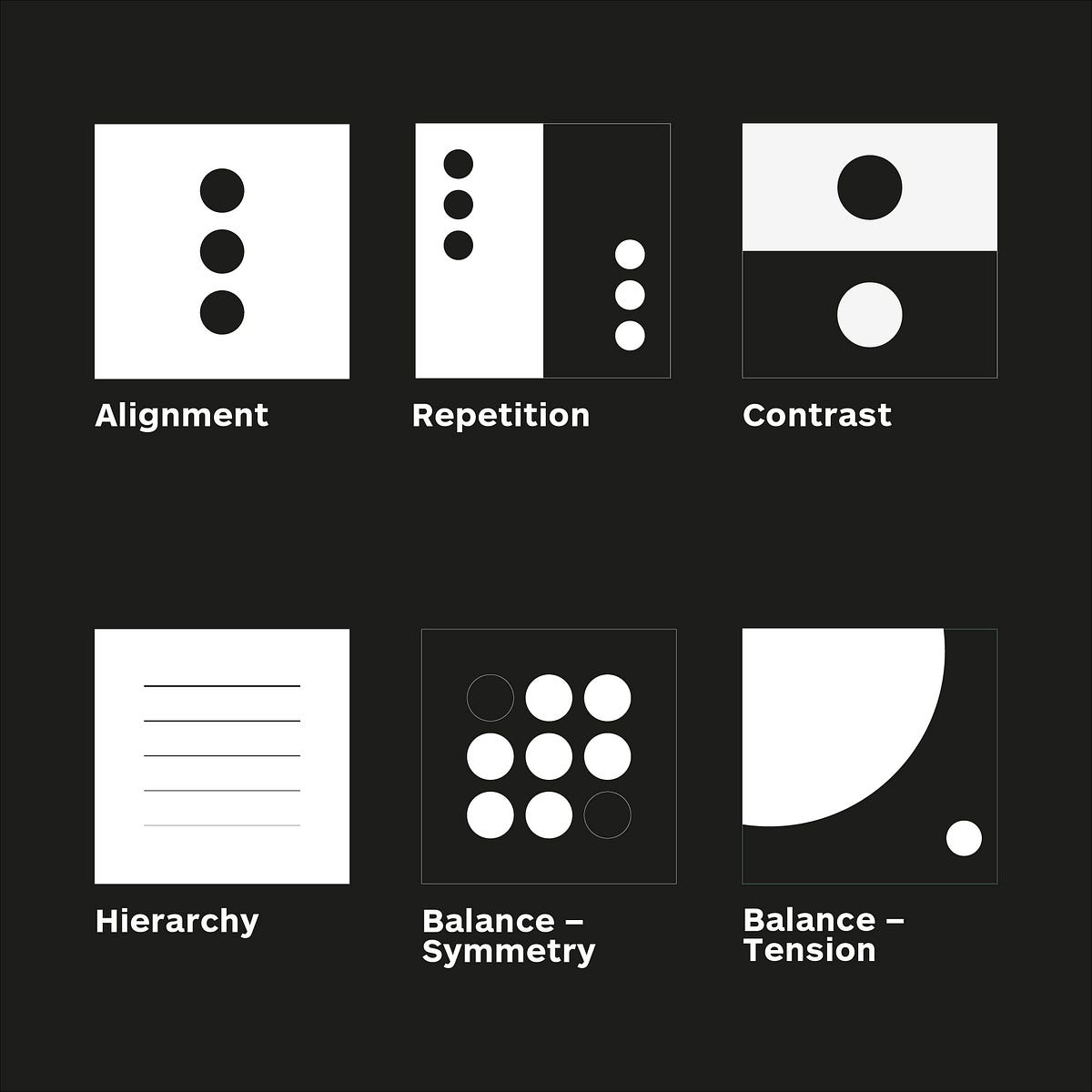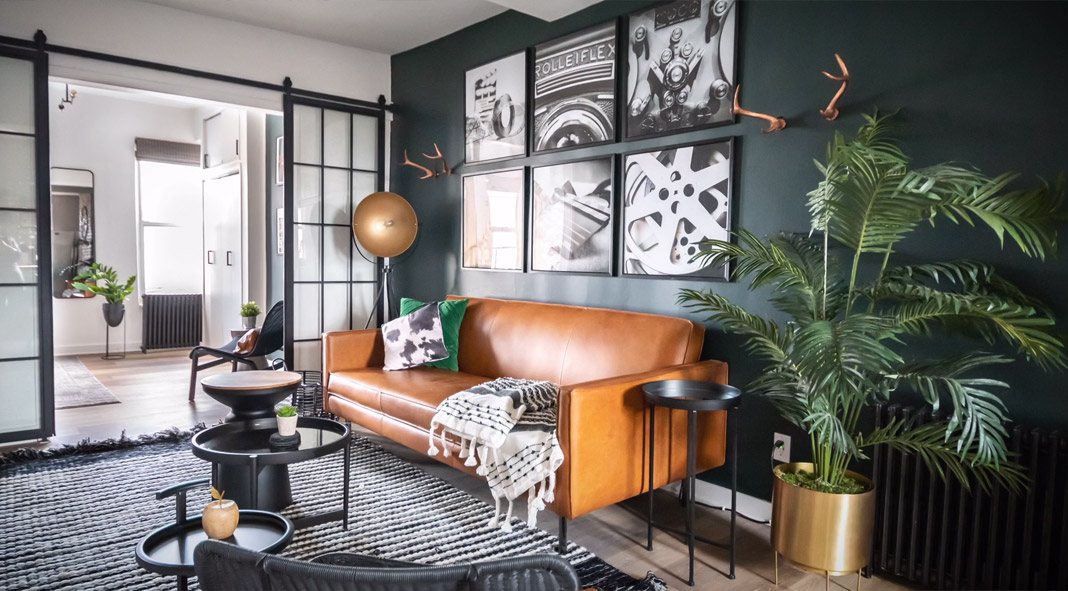Table Of Content

The lines and shapes you use in your designs are part of an even bigger picture called brand identity. Lines and shapes form the foundation of your designs, and how you use them can completely transform how a design looks and feels. Hierarchy shows the difference in importance of the elements in a design. Colour and size are the most common ways we can create hierarchy — for instance, by highlighting a primary button, or using larger fonts for headings. Items that appear at the top of a page or app also tend to be viewed as having a higher hierarchy than those appearing below.
Polyglots Share Their Advice On Learning A...
Balance is the even distribution of visual weight within the pictorial space. Utilizing the principle of balance ensures that visual elements are not haphazardly thrown together into a composition. Balance provides viewers with a sense of harmony and is aesthetically pleasing to the eye.
Brand Designer

In this blog, we’ll look at each of these fundamentals so you come away with a deeper understanding of graphic design and how to use it in your marketing. Variety isn’t just the spice of life—it’s the spice of design too. It’s integral not to revert to the same old elements within a design to make sure things are visually interesting for your viewers. People tend to get confused between repetition in patterns, which is understandable, as they both deal with repeated elements. Visual hierarchy is about organizing the value of the elements within your design. By ranking information from most important to least important, you make it easier for the viewer to digest your content.
Learn the fundamentals of design in less than 6 weeks
Color is the tool to use to enhance an already well-created design with the right emotions, set the correct tone and attract the viewer. You have to ensure that you use the appropriate category for the type of design you are creating. If you are trying to convey an elegant design and you use a silly display typeface, you will throw the viewer off.
For example, a design that’s all rounded edges will send a very different message than a design that embraces sharp lines. Understanding the meaning of lines and shapes is crucial for creating designs that are in-line with your brand, vision and messaging. One of the most vital elements of web design is your messaging.
Fundamentals of Software Testing: Concepts And Process - Simplilearn
Fundamentals of Software Testing: Concepts And Process.
Posted: Fri, 21 Jul 2023 07:00:00 GMT [source]
It still achieves balance but provides a whole different experience. They would go on to inspire generations of designers, including Johnny Ive, the mastermind behind Apple’s most famous products. Luckily for us, in the late 1970s, an influential designer named Dieter Rams saw this problem. In response, he asked himself what constituted good design and came up with his own list of ten principles. In addition to these, some sources—including this post—may include other principles like Alignment, White Space, Hierarchy, Variety, and Texture.
Repetition
Within the course, you’ll find a number of case studies where you can see how I created each of the following websites from scratch (including all mistakes and mishaps). As a developer, you’re likely involved in design decisions on a daily basis. Maybe you’re being asked to add a new feature to your company's web app, or you’ve had an idea for a side project that you want to look half-decent. Many tasks you work on involve some level of design skills. If you want to build a brand that tells your story and connects with your audience, you need to plan ahead.
Imagery
You can also play with proportions in a variety of ways to emphasize elements or get a certain message across. It’s a strategy you’ll notice advertisements do often and is usually best used for more creative projects. As you may have already guessed, repetition refers to when an element is repeated throughout a design.
The Language of Design: Form and Meaning
You’ll also learn about the types of grid systems and how to effectively use grids to improve your work. In the second lesson, you’ll learn about the science and importance of color. You’ll gain a better understanding of color modes, color schemes and color systems. You’ll also learn how to confidently use color by understanding its cultural symbolism and context of use.
Typefaces that are more fancy and stylized with exact characters. Display fonts are great for titles and short amounts of large type but should be avoided where you will need to have a lot of words in a design. They can have a big impact on the setting of the mood of a design.
You should play around with this site to get familiar with what typefaces convey specific moods. Typefaces that are similar to handwritten cursive letters, each one leading into the next. These are generally harder to read and should be used for headlines and accents. These are considered more modern as they originated more recently than sans serifs.
With the right balance, alignment, and composition, you can create designs that look like they’ve been brought to life. The best designs aren’t the ones that try to fit every design element on the block into a single composition. They utilize open space to bring attention to the elements that actually matter. Scale can be used to create a hierarchy for and add emphasis to certain elements on a design. Balance is the principle governing how we distribute the elements of a design evenly.
While these objects cannot be picked up the viewer can still understand the textures the paint is mimicking. Red, blue, and yellow are the foundation of the color wheel. Their true color pigments cannot be created by mixing any other combination of colors. All other colors in the wheel are derived from these three hues. Sometimes the easiest way to learn is just to watch someone work. You’ll pick up tricks that you never thought to look for before!
No comments:
Post a Comment